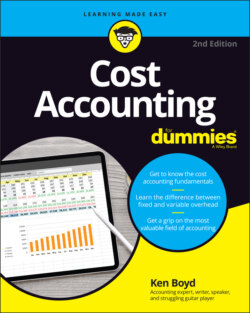Читать книгу Cost Accounting For Dummies - Kenneth W. Boyd - Страница 62
Calculating the breakeven point
ОглавлениеCost-volume-profit analysis starts with the breakeven point. Breakeven answers this question: “What’s the amount I need to sell to cover all my costs?” When you open the front door of your business on the first day of a new month, your first concern is likely to be how much you have to sell to at least cover all costs for that month. At a minimum, you don’t want to lose money.
It doesn’t matter whether you’re selling a few glasses of lemonade or manufacturing automobiles. Either way, the breakeven point has three simple elements:
It includes fixed costs and variable costs.
It includes sales, either units of product sold, or the total dollar amount of sales (revenue). The term volume refers to the level of sales.
It assumes profit of zero.
The reason for the name breakeven point is pretty obvious. It’s the point where you neither make nor lose money. It’s the point where you break even.
Examine the elements required to find the breakeven point: Fixed costs remain constant, regardless of the volume of products or services you provide. Variable costs increase or decrease proportionately with the number of products you sell or services you deliver. The total variable costs, of course, increase as you produce more products or provide more services, and vice versa if fewer items, products, or services are provided. Sales is the total dollar amount received for your product or service. Finally, profit represents sales less all your costs.
Okay, if you want to split hairs, there’s an exception about fixed costs that is important in analyzing cost-volume-profit: relevant range (see Chapter 1). But in most cases, the level of activity stays within the relevant range for fixed costs.
What makes the breakeven point so important is that every sale above your breakeven point generates a profit. If your breakeven point is 100 units, you make a small profit when you sell the 101st unit. That’s good! After you know your breakeven point, you can plan the level of sales you need to generate a specific amount of profit.
What goes up can come down. If you sell only 99 units, you have a small loss. That’s not good! The fewer units you sell, the larger your loss.
